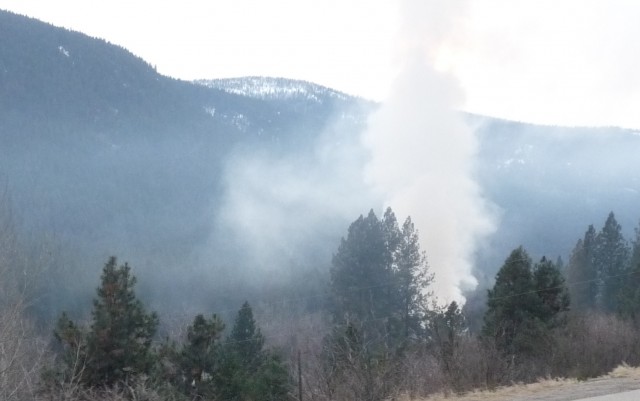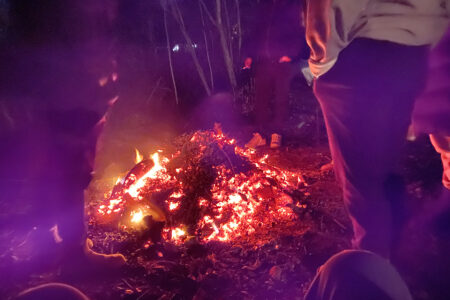Nephelometer to continue sniffing local air for one more year
The University of Victoria has agreed to let Grand Forks borrow their nephelometer for one more year to continue gathering data on local air quality.
The nephelometer has been sniffing around the major byways of Grand Forks since June 2012. It measures particulate matter in the air caused by things like dust and exhaust. It does not measure gases. The information is helpful in evaluating local air quality. Fine particulate in the air has been linked to aggravating cardiac and respiratory diseases, it also can be seen in the air as a haze and in deposits of dust on vehicles.
The extension comes after a meeting between the air quality sub-committee of the city’s environment committee and Eleanor Setton of the University of Victoria and AJ Downie from the Ministry of Environment in Nelson held via teleconference on Feb. 19.
For the past six months local volunteers, including the Citizens On Patrol, have driven around the nephelometer. This summer it is hoped another summer student will be manning the project and providing educational information to residents too.
It is also hoped the same student can be used to help with water conservation programs to help with the Kettle River Watershed Management Plan.
Winter particulate from roads and wood smoke higher than summer
This winter’s data gathering has proven to be very interesting. In some cases, the readings were higher than those experienced in the summer months when the study started in 2012, said Grand Forks Environment Committee member and nephelometer volunteer Paul Pinard during his presentation to the city’s environment committee on Thursday, March 21.
“(The elevated particulate levels) tells me that road dust is a problem at this time of the year,” said Pinard during his mapped presentation of the data. “Roxul has never given us a reading that high.”
Wood smoke has also contributed to poor air quality.
“The wood smoke on Spraggett Road is just as high as Roxul. We’re also getting a lot more dust, and not just on Granby Road. Riverside Drive is like a funnel for poor air quality.”
“Road dust seems to be a real problem in this town,” agreed Peter Shilton of Roxul.
The road dust, which is mainly caused by the sand left over from the winter and is now dried out and blowing around the streets, has been a leading culprit in air quality concerns since January.
The committee will recommend to city council to have the streets cleaned as earlier as possible in the spring to minimize particulate matter in the air.
They are also considering a recommendation be made to the Regional District Kootenay Boundary about agriculture burning permits. On Feb. 13 the air quality index spiked to 75 micrograms per cubic meter – a Grand Forks air quality advisory threshold is an average of 25 micrograms per cubic meter. The jump was directly attributed to agricultural burning being done in Area D that day – a day that had little wind or air flow, according to the minutes taken during the Feb. 19 meeting.
“It did create quite an air pollution over the city,” said city councilor Cher Wyers.
Nephelometer can now be stationary while doing a reading
There have been some adjustments made to the nephelometer so it now may be parked in a spot rather than just driven around to measure particulate matter. Pinard said one night he parked the nephelometer at a home that is located at the same level as the Roxul stack. The readings went as high as 32 micrograms per cubic meter, said Pinard.
Pinard hopes to continue parking the nephelometer in strategic problem areas to gather even more data that will help the city and RDKB make changes to help improve local air quality.






















